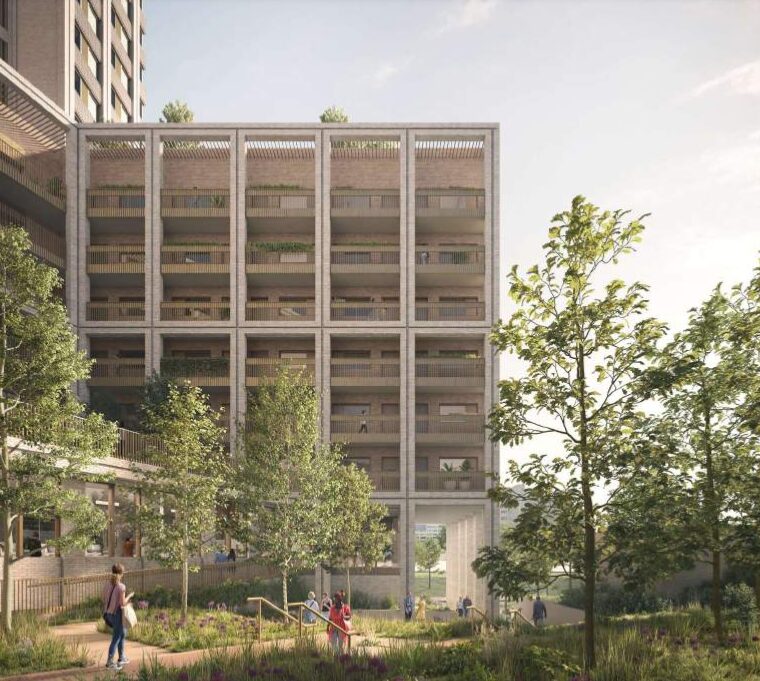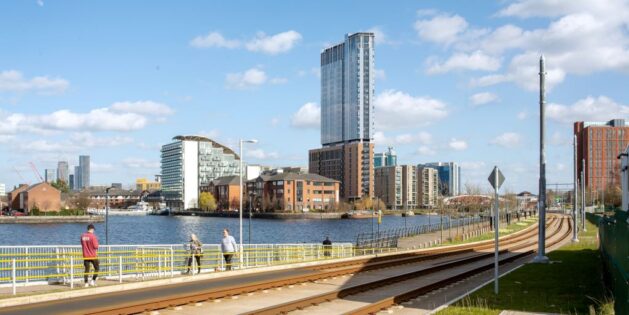Co-living: Small does not mean bad, says HUB
Outside London, co-living in Britain has not taken off the way it has in mainland Europe. One developer in the space thinks regional cities are missing a trick.
Developer HUB and partner Bridges Fund Management recently commissioned Dutch architecture studio MVRDV to carry out a piece of research on co-living that aims to demonstrate how the model looks across the globe and address some of the concerns people have about it.
Changing perceptions
Some critics of co-living say it provides poor-quality living and serves to exacerbate the housing crisis rather than solve it.
In a Guardian article from 2019, Hannah Wheatley, then a researcher on housing and land at the New Economics Foundation, said co-living is “purely a new way for developers to squeeze profit from an already broken housing market.”
Five years on, this theory endures in some quarters.
“There is a perception in the UK that co-living is bad because small homes mean poor quality,” Damian Sharkey, HUB’s managing director, told Place North West.
“We want to change that message and say, actually there is a place for co-living in the UK, and not just in London, but Manchester, Leeds, and all cities around the UK.”
The co-living model falls somewhere between build-to-rent apartments and purpose-built student accommodation. Typically, it offers small units with a bed, kitchenette, and a private bathroom, as well as communal amenity space aimed at bringing residents together.
It also has wellbeing benefits, especially when it comes to combatting loneliness, according to Sharkey.
“Moving to a new city for a new job can be one of the most daunting experiences, and the ability to live in one of these communities where there already is this idea of community living we think is really appropriate.”
Regional attitudes
Manchester bucks the trend somewhat when it comes to regional cities’ attitudes towards co-living. Several large schemes are currently under construction, including Downing’s mammoth 1,300-unit Square Gardens.
However, some local authorities around the country are more reluctant.
In Salford, CERT Property’s proposed co-living development at Clippers Quay has been in for planning since early 2022. The city council also rejected Beech Holdings’ co-living plans last year.
In Liverpool, Crosslane saw its plans for a 234-unit development rejected by the city council and the Planning Inspectorate. Sheffield City Council also seems unsure; the authority ruled last year that MBU RED and BW Investments’ 228-unit scheme would “provide unacceptable living conditions” and rejected the proposal.
Even in the South, where the model is more established, it is not always plain sailing in planning terms. Wandsworth Council and Brighton and Hove Council have both recently rejected co-living plans.
Size matters
In most cases, the sticking point is unit size. Typically, co-living units are smaller than the 398 sq ft minimum set out in the NPPF.
However, Sharkey argues that focusing too much on dimensions is missing the point.
“A 250 sq ft home that is really well designed and well-considered can be an amazing space to live in,” he said.
Another problem for would-be co-living developers is that councils do not have specific planning policies for the model.
This is why nationally described space standards are such a hurdle; LPAs are comparing co-living with BTR when, in reality, the two products are very different.
The Greater London Authority recently adopted co-living-specific planning guidance that sets the lower threshold for unit size at 194 sq ft, well below what is required under NDSS. This move could act as a catalyst for similar policies nationwide.
HUB’s three co-living schemes are all in London. Sharkey wants to see councils around the country warm to the idea.
“We would love to bring co-living to regional cities,” he said.
“We’re not saying co-living is the solution to the housing crisis, it’s just part of the solution.”
He added: “The idea of shared living is not new. People have lived together for over 200 years, but co-living is the new generation of it.”

Crosslane’s Liverpool project did not comply with minimum space standards. Credit: via planning documents
HMOs vs co-living
As well as providing homes for young professionals, co-living has other benefits. Sharkey said it could help to reduce the country’s reliance on HMOs. In turn, this could see existing HMOs converted back into homes for families.
Having one building with hundreds of tenants would be better and easier to manage than a street full of HMOs, he added.
“It benefits local authorities if one organisation has got responsibility for the management rather than the HMO model where you have a house carved up into four or five flats with poor quality living and potentially a rogue landlord,” he said.
Better governance and freeing up family housing are two benefits. A third is certainty over bills.
Typically, co-living tenancies offer an all-inclusive rent that includes utility bills. Sharkey thinks this is particularly important at the moment given the cost of living crisis.
“If you sign a 12-month lease, you know what your outgoings are for the next 12 months,” he said. “I think it’s really valuable.”
Certainty in a volatile economic climate is good but co-living, while more affordable than an apartment in a shiny tower, is not exactly cheap. A standard studio in Union’s recently completed Manchester scheme will set you back £1,095 a month, considerably more than you would expect to pay for a room in an HMO.
Proof of concept
A recent Savills report estimated that there are just 4,000 units for a pool of 2m potential co-living customers. If this sub-sector is to become more than a nascent market the onus is on developers to put forward a convincing argument of the model’s benefits.
“There’s a responsibility on us to deliver good quality co-living in the UK,” Sharkey said.
“If we deliver the next generation of co-living we’ll be able to take local authorities from Manchester, Leeds, Birmingham, wherever it may be, and say ‘this is what’s possible in your city.”
Good quality schemes already exist in the UK. Sharkey highlights Folk’s Sunday Mills and HUB’s own Yardhouse, both in London, as developments that demonstrate the virtues of co-living.
More of those are needed to move the dial on the product regionally.
“In the UK, we’re more cynical about new ideas at times. We need to prove the idea and prove the concept before it’s accepted.”
One way to convince councils that co-living is a viable and necessary housing model would be to point out the amount of old, energy-inefficient office stock in cities.
Converting commercial buildings into co-living schemes, whilst not always possible, could address several issues at once by providing much-needed homes within unlettable workspace, all while avoiding the carbon impact of demolition, according to Sharkey.
“These buildings often carve up quite beautifully into co-living developments,” he said.
“The idea of taking these redundant office buildings and making them homes gives people opportunities to live in city centres they otherwise wouldn’t have.”
Hear more about co-living at Place North West’s rental market update on 9 May






So ‘luxury’, expensive to rent high rise blocks of bedsits? Or am I just being old fashioned and cynical ….
By Anonymous
Manchester bucks the trend somewhat when it comes to regional cities’ attitudes towards co-living…
Nothing to do with the obscene cost of renting/buying normal sized properties then?
“co-living” might suit students for a while, but the only people missing this particular “trick” are those who want to fleece people trying to live in the UK.
They now want to downgrade even bedsits into just a room with no washing or cooking facilities!!
By John
“A 250 sq ft home that is really well designed and well-considered can be an amazing space to live in,” he said.
A 15ft x 16ft home isn’t a home, it’s just a decent sized room. But then again if you’re out most of the day it’s probably bearable for a while. Imagine being cooped up in there during a pandemic…
By Anon
Student living accommodation for all. Hip hip…
By Verum
I do wonder if Mr Sharkey would live in one of these boxes given it’s such an “amazing” place to live.
I think I can probably guess the answer.
By John M
The comment from 2018 “purely a new way for developers to squeeze profit from an already broken housing market” is still spot on, and nothing in this article has changed my mind on that. When will the powers that be realise that the housing market really is broken, and co-living will only exacerbate that?
By Anon